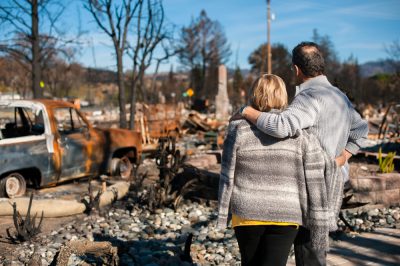Wildfires & insurance claims: Why the process can be so challenging
Earlier this year, Los Angeles experienced a series of devastating wildfires, most notably the Palisades and Eaton fires, which together scorched approximately 38,000 acres.
The Palisades fire, which ignited on January 7 in the Pacific Palisades area, rapidly expanded to over 23,700 acres by January 15. Meanwhile, the Eaton fire broke out in the Altadena region, consuming around 14,117 acres. Tragically, these fires resulted in at least 25 fatalities and the destruction of thousands of homes.
The primary causes of these wildfires were extreme and rare windstorms, with Santa Ana wind gusts reaching up to 100 mph, combined with exceptionally dry conditions following eight months without measurable rainfall. These factors created the perfect conditions for rapid fire spread, leading to catastrophic loss of life and property.
In this article, we’ll explore how to file an insurance claim if your property was affected, the potential challenges you may encounter, strategies to navigate them, and a broader perspective on how insurance functions in the wake of catastrophic events like these.
Steps to filing an insurance claim
In the aftermath of the fires, affected residents are navigating the complex process of filing property insurance claims. Understanding the necessary steps can help ensure a smoother and more efficient recovery.
The first step for policyholders is to contact their insurance providers to report damages promptly. Timely communication initiates the claims process and allows insurers to provide guidance on the required documentation.
Next, it is essential to thoroughly document all damaged or lost items. Taking clear photographs and maintaining detailed records, including descriptions, purchase dates, and approximate values, strengthens the claim’s validity.
To prevent further damage, homeowners may need to make temporary repairs, such as covering exposed areas. Keeping receipts for these repairs is crucial, as they are typically reimbursable under most policies.
Once the claim is filed, insurance companies will dispatch adjusters to assess the extent of the damage. Being present during inspections ensures that all losses are accurately accounted for and any concerns can be addressed directly.
Finally, insured homeowners should review their policy to understand coverage limits, deductibles, and specific clauses related to wildfire damage. Having a clear grasp of these details helps set realistic expectations for claim outcomes and ensures there are no surprises during the settlement process.
Challenges in the claims process
Despite these steps, homeowners may encounter several challenges while filing claims.
Given the scale of the disaster, insurers are handling thousands of claims, leading to longer processing times. This can slow down payments and repairs. Insurance providers may offer settlements lower than expected, citing depreciation or policy limits.
Some homeowners may discover that their policies do not fully cover the cost of rebuilding, especially if property values have increased since their last assessment, which, sadly, in a state like California, is a harsh reality.
Without thorough documentation, some claims may be delayed or denied if insurers require more proof of ownership or value. A surge in demand for repairs can lead to a shortage of construction workers and materials, delaying rebuilding efforts.
Challenges for insurers
The impact of catastrophic losses extends beyond homeowners, placing immense strain on insurers as well.
Massive disasters like wildfires create financial instability by forcing insurers to pay out billions of dollars in claims within short periods. This significantly reduces the capital available to maintain their risk pool, making it difficult to balance the financial stability of the company while fulfilling obligations to policyholders.
When losses surpass anticipated levels, some insurers may increase premiums, reduce coverage in high-risk areas, or even withdraw from certain markets altogether. This has already been seen in California, where some insurers have scaled back offerings due to the rising frequency and severity of wildfires.
This is further compounded by the unpredictability of climate-related disasters, making it difficult for insurance companies to accurately model risk and allocate resources efficiently, yet.
Way forward
To navigate these challenges effectively, homeowners should take proactive steps.
Maintaining open communication with insurers and regularly following up on claim updates ensures that you remain informed. Aside from that, seeking professional assistance from public adjusters or even insurance attorneys can help resolve disputes over settlement amounts.
Exploring government and nonprofit aid can help bridge financial gaps that insurance payouts may not fully cover. In response to the recent fires, the federal government has announced financial assistance of $770 per affected resident, providing some immediate relief to those impacted.
Additionally, maintaining detailed records of all communications, repair estimates, and receipts strengthens claims and ensures the necessary documentation is readily available for insurers.


